10 Small Chicken Breeds for Beginners
Adding small chicken breeds to your outdoor bird collection can be a fantastic option, particularly when you’re working with limited garden area. Children are often enamored with these pint-sized fowls and enjoy having them as feathery pets. This article focuses on breeds that aren’t demanding in care and are most appropriate for hobbyists, steering clear of those best left to the poultry experts.
1. Silkies
Distinctive for their unique, soft plumage, Silkies are a standout among the small chicken breeds. Their charm isn’t just skin (or feather) deep; beneath the fluff, they boast peculiarities like five toes, azure earlobes, and inky-black skin.
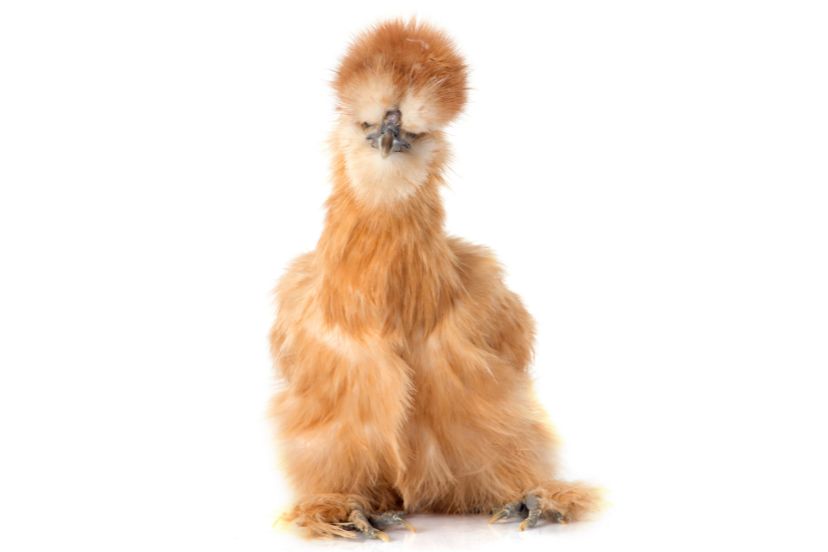
| Hen Weight | Rooster Weight |
| 2 lb (0.9 kg) | 3 lb (1.3 kg) |
Silkie chickens epitomize feathery friendliness with their small, cozy size and docile nature, often making them favorites as indoor pets. Some enthusiasts even house Silkies indoors using specially designed chicken diapers. These amiable creatures thrive on human interaction, often seeking a lap for a cuddle, and can even be trained to do tricks. However, despite their adaptability to indoor life, it’s crucial to provide them access to outdoor spaces for their overall well-being, just like other chicken breeds.
While primarily esteemed for their aesthetic appeal, Silkies aren’t slackers in the egg department. They manage to lay approximately 160 eggs annually, averaging out to about three eggs weekly. However, prospective Silkie owners should be cognizant of their strong maternal instincts.
Silkies are notorious for their broodiness, which, although makes them exceptional mothers, can be a hindrance if egg production is the primary goal. Their maternal mode not only pauses egg-laying but might also distract them from eating or drinking adequately.
Considerations for potential owners:
- The luxurious plumage of Silkies is not equipped to handle inclement weather. It lacks water-resistant qualities, making them susceptible to dampness and cold. If you reside in a region prone to such conditions, Silkies might not be the best fit.
- Silkies aren’t the top birds on the playground. More dominant breeds, like the Rhode Island Red, can easily bully them. Hence, it’s advised to be selective about their coop-mates.
- A combination of their dense feathering, which occasionally obscures vision, and their trusting nature makes them easy prey. Ensuring they’re in a secured environment, like a closed run, is paramount.
- Their inclination to brood is double-edged. While it underscores their nurturing side, it concurrently disrupts their egg-laying routine.
2. Dutch Bantam
A true testament to the Bantam classification, Dutch Bantams are naturally petite, without any large chicken counterparts from which they evolved. Characterized by a singular comb boasting five distinct points, their medium, almond-shaped white earlobes are a striking feature.
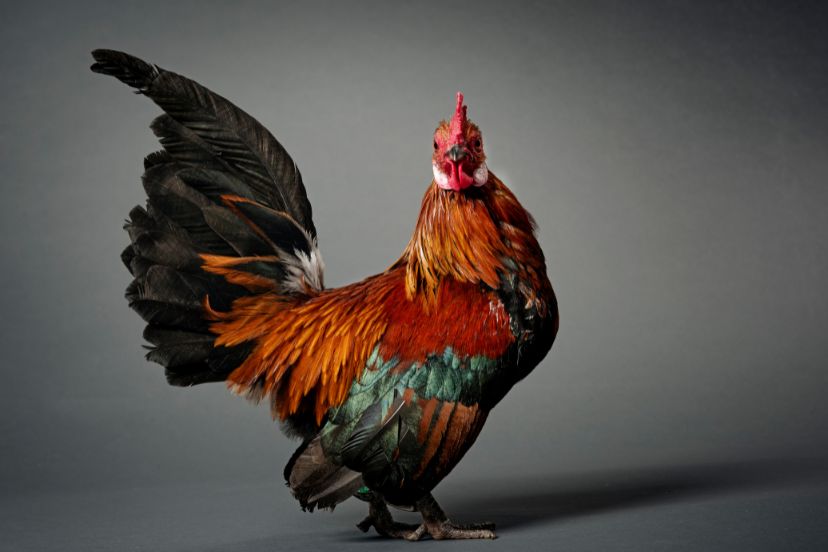
| Hen Weight | Rooster Weight |
| 18 oz (500 gr) | 20 oz (550 gr) |
While being compact in size, Dutch Bantams pack a punch in hardiness, making them approachable for beginners. Their small stature and comb design, however, render them sensitive to chilly weather. These little champions lay around 160 cream-hued eggs annually. Broodiness isn’t their trademark trait, but it’s not entirely off the table.
Vibrant and lively, Dutch Bantams exude enthusiasm. Their petite frame and eager wings may occasionally urge them to take short flights. Unlike the docile Silkies, they may not perch on your lap often, but their gregarious nature ensures they remain delightful additions to any garden coop.
Considerations for potential owners:
- Cold climates aren’t their forte. For chilly regions, exploring other robust breeds might be prudent.
- With their propensity to flutter, ensure your coop has tall barriers or is overlaid with mesh or cloth to prevent escapades.
- Their reduced size can make them attractive to predators. If considering free-ranging, vigilance is advised.
3. Serama
The Serama, much like its Dutch Bantam counterpart, belongs to the pure bantam category, devoid of a larger predecessor. Proudly holding the title of the world’s tiniest chicken breed, the Serama hails from Malaysia and flaunts an array of color patterns. A signature 90-degree tail angle, giving them a V-posture, distinguishes them from other breeds.
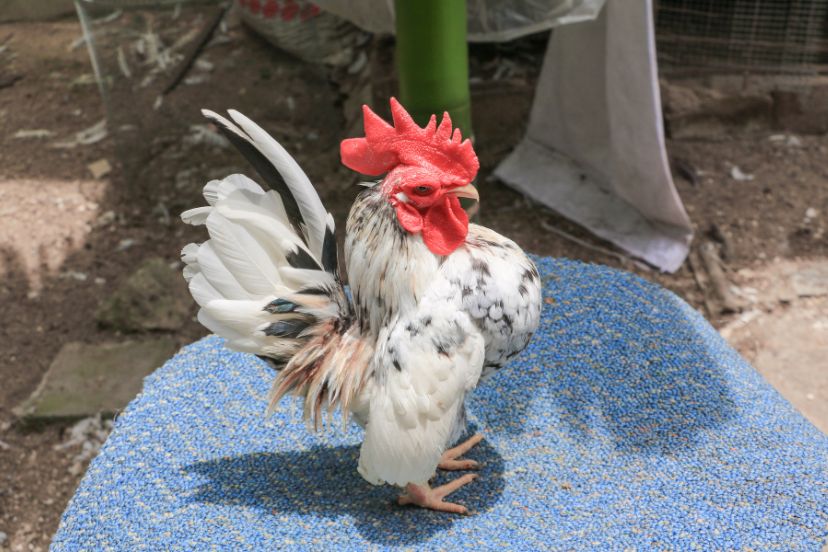
| Hen Weight | Rooster Weight |
| 14 oz (400 gr) | 18 oz (500 gr) |
Their wings, grazing close to the ground, make them ill-suited for moist or muddy settings. In adverse weather, it’s wise to house these diminutive birds in a barn or shelter to protect them.
Despite their small stature, Seramas are reliable egg producers, delivering about 150 eggs annually that range in hue from brown to white. Prospective breeders should note that the Serama lineage carries a lethal gene (inherited from Japanese Bantams) which sadly results in roughly a quarter of their chicks not surviving till hatching. They’re relatively low-maintenance but breeding them comes with its challenges:
- Seramas are vulnerable to cold, damp conditions. A single chilly night could be fatal. Sheltering them during unfavorable weather is essential.
- Their genetic makeup includes a lethal gene complicating breeding efforts. If you’re not keen on breeding, this concern might be moot.
4. Cochin Bantam
Cochin Bantams, sometimes referred to as Pekin Bantams, hold a special place among poultry enthusiasts, primarily because of their endearing fluffiness. Their low maintenance and gentle disposition make them a favorite, particularly for those just starting out with poultry care. Nonetheless, their physique predisposes them to weight issues which can, in turn, lead to a host of health complications.
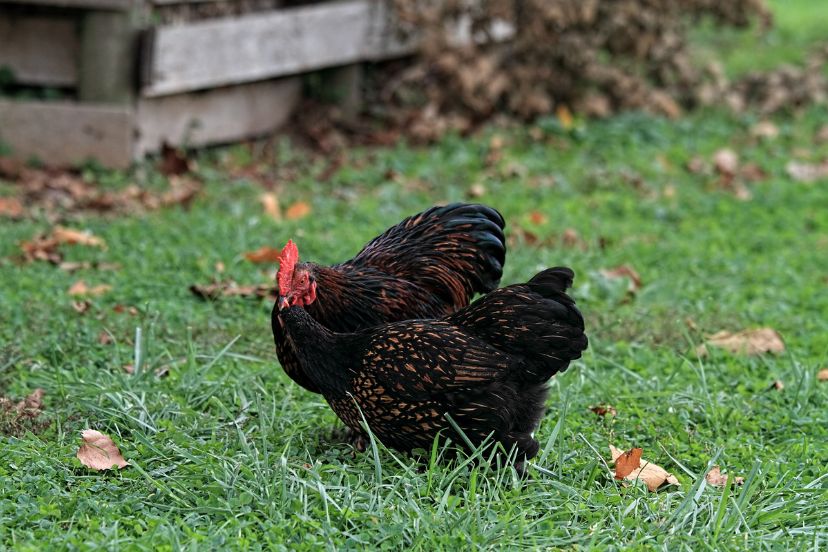
| Hen Weight | Rooster Weight |
| 28 oz (800 gr) | 28 oz (800 gr) |
The Cochin Bantam, contrary to its name, is not merely a miniature version of the standard Cochin chicken. They are distinct entities, each boasting unique characteristics and requirements. This bantam variety has evolved its own distinct features and behaviors that set it apart from its larger counterpart.
Known for laying smaller eggs, Cochin Bantams produce approximately 110 brown eggs annually. Though more diminutive in size, these eggs pack the same nutritional punch and flavor as those laid by larger chickens. Cochin Bantam hens have a pronounced tendency towards broodiness, a maternal instinct to incubate eggs. During these periods, a hen may become reclusive or even aggressive, often spending significant time nesting on her eggs, regardless of their fertility.
This broodiness, while advantageous for natural hatching, can pose challenges for those not aiming to grow their flock. A brooding hen decreases her egg production, and her persistent nesting can lead to issues like mites or weight loss from decreased feeding. Techniques to curb this include shifting the hen to a different setting temporarily, regular nest inspections and emptying, or maintaining a cooler environment to dissuade the behavior.
Cochin Bantams are adaptable to varying climates, handling both warmth and cold effectively. However, during severe weather changes, they need extra care. Their feathered feet and smaller size necessitate a dry, sanitary environment to prevent foot complications and fungal ailments.
5. Sebright
The Sebright chicken, a unique Bantam small chicken breed with no larger version, stands as one of the earliest noted British Bantam breeds. Known for their delicate laced feathers, both males and females display the same feather pattern due to the rare hen feathering condition. These birds are globally cherished for their beauty and adaptability to various climates, but they have a tendency to be somewhat flighty, necessitating a secure environment.
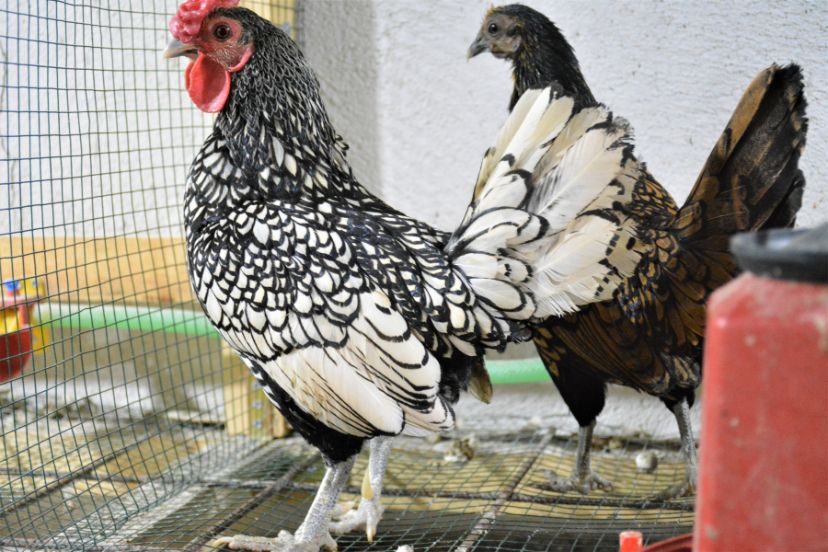
| Hen Weight | Rooster Weight |
| 20 oz (570 gr) | 22 oz (620 gr) |
While friendly and easily tamed, Sebrights produce only 60-100 small eggs annually. Many enthusiasts opt for Sebrights primarily for their ornamental value, exhibition potential, or as delightful pets. Their sociability and low maintenance needs as adults make them ideal companion chickens.
However, potential owners should approach breeding with caution. Sebright chicks can have high mortality rates, and their genetic profile occasionally leads to male infertility. Those keen on keeping Sebrights should consider partnering with a reliable breeder and be prepared for the challenges associated with breeding and rearing chicks.
6. Modern Game Bantam
The Modern Game Bantam might seem an unconventional choice, but there’s a compelling reason for its inclusion among the small chicken breeds. While it doesn’t possess the plush appeal of Silkies or Frizzled Cochins, the Modern Game Bantam stands out as an exceptional pet chicken.
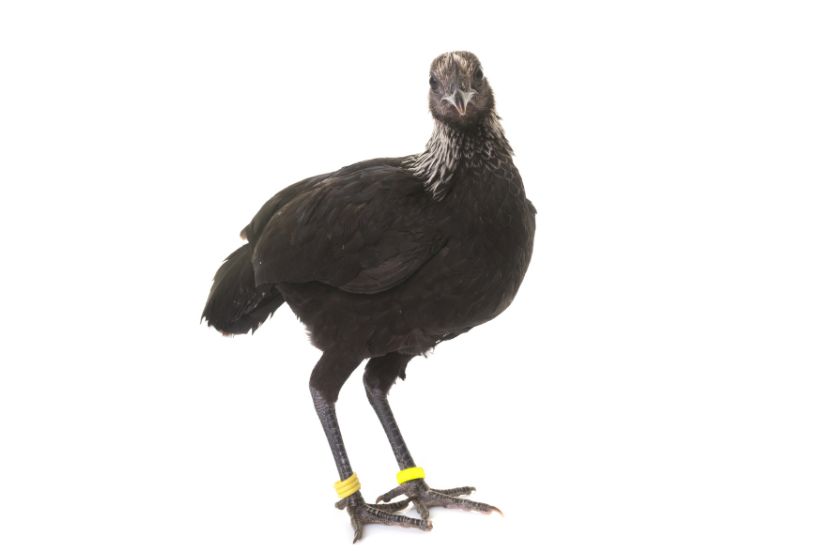
| Hen Weight | Rooster Weight |
| 20 oz (570 gr) | 22 oz (620 gr) |
Endearingly social, affable, and inquisitive, these birds enjoy human interaction. They’re easily domesticated, making them suitable playmates for kids. Surprisingly, for a game bird, they’re quite prolific in egg production, producing about 100 eggs annually. A notable trait is their delayed maturity, beginning egg-laying around the 24-week mark.
A simple-care breed, the Modern Game Bantam requires just the basics: water, feed, and shelter. This makes them an ideal choice for chicken novices. With their plethora of color variants, they cater to various aesthetic preferences. Their unique feature? Long legs and a slender build, ensuring they’re swift on their feet – a challenging chase if they break free!
When considering a Modern Game Bantam, bear in mind:
- They’re late bloomers, laying eggs from 24 weeks, unlike the typical 19-20 weeks of many breeds.
- They’re lean and athletic, reminiscent of their game bird lineage, but beneath that exterior lies a fantastic pet disposition.
- Their agility is unmatched, thanks to those long legs – keep an eye on them to prevent any great escapes!
7. Belgian Barbu d’Anvers
With a lineage hailing from the Northern city of Antwerp in Belgium, the Belgian Barbu d’Anvers is a breed rich in history and one of the world’s most ancient Bantam chickens. Its unique characteristics partly stem from a mix with the Dutch Booted Bantam, as well as its Belgian counterpart, the Bearded d’Uccle. This familial link leads to a resemblance across these breeds.
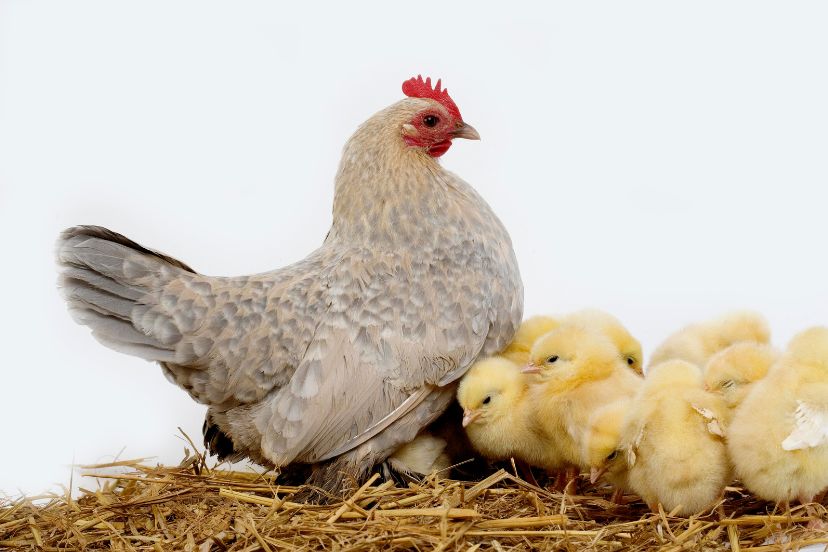
| Hen Weight | Rooster Weight |
| 21 oz (600 gr) | 25 oz (700 gr) |
An ornamental presence with a friendly disposition, the Bearded d’Anvers lays around 100 eggs per year. They’re known for their inquisitive nature and fondness for human companionship. Allow them to roam free in your garden, and these lively birds might follow you around with curious enthusiasm. Beware of the roosters, though; they’re known for their vivacity and sometimes noisy demeanor.
Although considered robust, the Belgian Barbu d’Anvers has particular needs concerning its environment. They prefer dry conditions and are averse to wet and muddy surroundings. If you’re contemplating bringing these engaging birds into your life, remember:
- Their roosters may be excessively lively and loud, a factor to consider if you reside in a suburban setting.
- A covered or dry area for habitation is essential, as they don’t take well to damp environments.
8. Booted Bantam
The Booted Bantam, also known as the ‘Dutch Sabelpootkriel’, hails from the Netherlands and is a true bantam breed. Its most distinctive feature is the profuse feathering on its shanks and feet, lending it the ‘booted’ moniker.
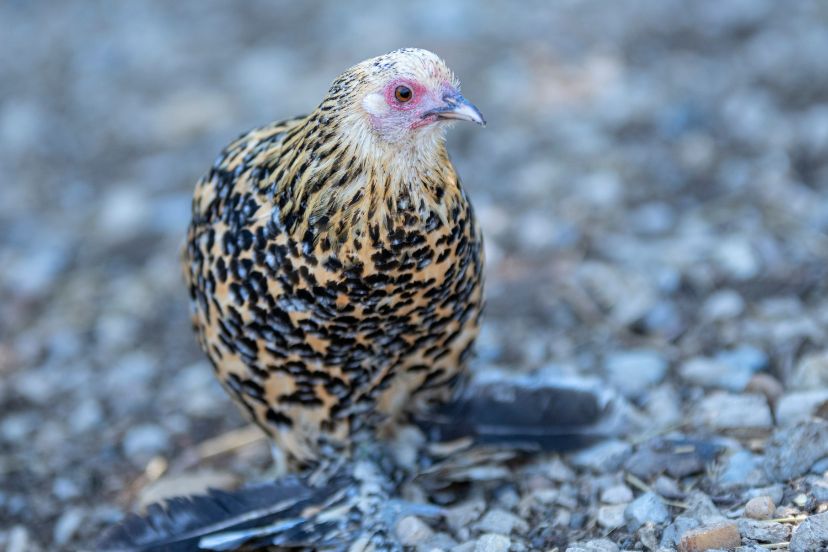
| Hen Weight | Rooster Weight |
| 23 oz (650 gr) | 30 oz (850 gr) |
While primarily a showpiece bird, this breed is quite prolific in egg production, yielding up to 120 petite, white eggs annually. Although the eggs are edible, their small size makes them less sought-after for egg enthusiasts.
For these feather-footed fowls, a covered run is ideal to prevent their feet from becoming damp. They, like other breeds with similar foot feathering, prefer to steer clear of muddy or overly moist surroundings.
Considering a Booted Bantam? Remember:
- Their egg production is robust, but the eggs are notably small.
- A sheltered run is recommended to keep their unique feathered feet dry.
9. Appenzeller Spitzhauben Bantam
Originating as a scaled-down version of the centuries-old Swiss Appenzeller Spitzhauben chicken, the bantam variant was introduced in The Netherlands. Available primarily in Gold-black spangled and Silver-black spangled hues, while the large counterpart is relatively common, its bantam sibling is rarer.
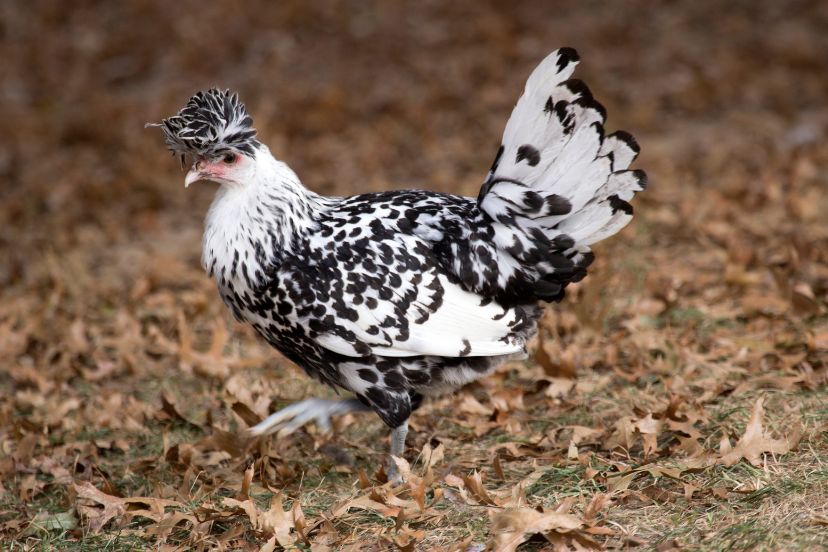
| Hen Weight | Rooster Weight |
| 25 oz (700 gr) | 28 oz (800 gr) |
The Appenzeller Bantam Spitzhauben boasts a unique appearance with sharp feather crests and distinct V-shaped combs. Their quirky appearance, coupled with their friendly demeanor, makes them a delightful addition to your small chicken breeds. Expect a consistent supply of white eggs weekly from these moderate egg producers.
Thriving in open spaces, these bantams dislike being restricted. Their preference for free-ranging makes them unsuitable for confined spaces, setting them apart from other petite chicken breeds.
Before welcoming an Appenzeller Bantam into your fold, note:
- They crave expansive spaces or free-ranging environments.
- Their bantam variant can be a challenge to procure due to its rarity.
10. Pekin Bantam
While their voluminous plumage might suggest heftiness, beneath the layers of feathers, they’re more petite than they appear. Their vibrant feather palette spans a spectrum from delicate lemon blue to the more striking birchen shade.
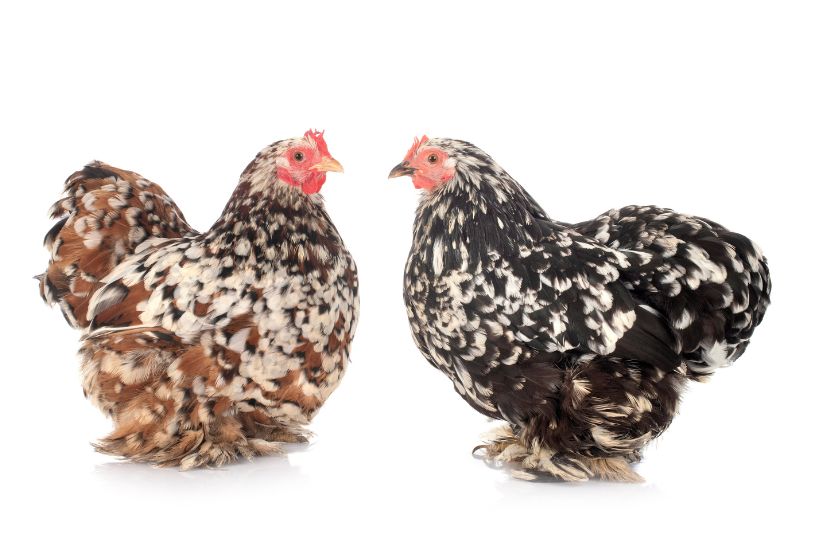
| Hen Weight | Rooster Weight |
| 1.65lbs | 1.85lbs |
The hens are peaceful, serene, and amiable, making them perfect companions, especially for households with kids. Their mild temperament contrasts with some roosters, who can exhibit protective tendencies over their brood. Given their stature, Pekins possess the ability to soar. This should be a consideration in their housing design to ensure they don’t flutter out.



